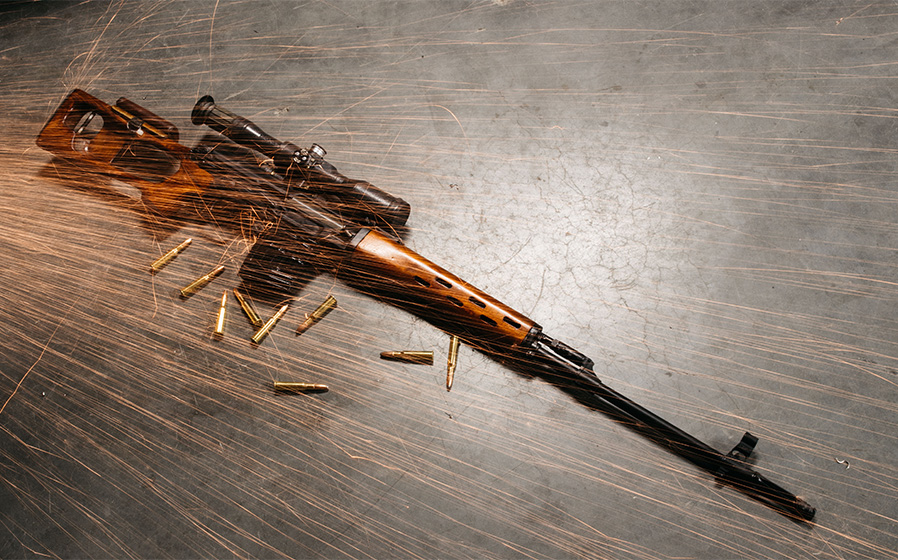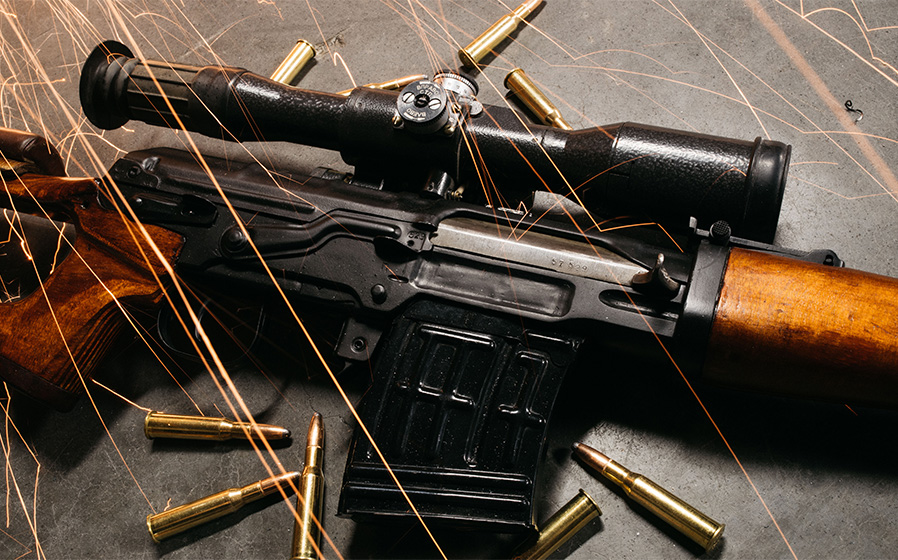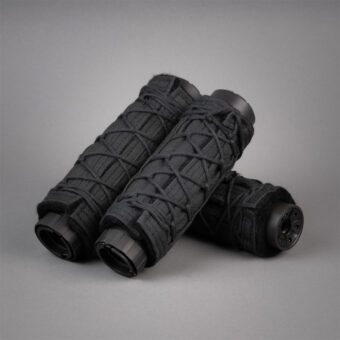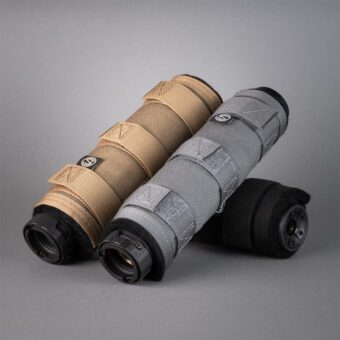Home / Silencer & Gun News / Arsenal Blog 003: Dragunov SVD
SILENCERCO’S ARSENAL SERIES showcases guns we love for various reasons that reside in our in-house Arsenal. While we are best-known for making guns quiet, in order to do so we interact with a great variety of amazing platforms. In these posts we will tell you about each platform we like, why it’s different and relevant, and why we think it belongs in our pantheon of greatness.
THE DRAGUNOV SVD(Snayperskaya Vintovka sistem’y Dragunova or Sniper Rifle, System of Dragunov) sniper rifle is a semi-automatic designated marksman/sniper rifle from the former Soviet Union chambered in 7.62x54mmR (rimmed) and introduced in 1963. The Dragunov is a gas-operated with a short-stroke gas-piston system with a two position gas regulator.

BARREL: The barrel has a relatively thin profile chrome lined barrel to save weight, a distinctive slotted flash suppressor on the end, and rifling that extends down 21.5 of its length. In the 1960s, the twist rate was 1:12.6 inches. During the 1970s, the twist rate was tightened to 1:9.4 inches in order to facilitate the use of tracer and armor-piercing incendiary ammunition, since these bullet types required a shorter twist rate for adequate stabilization. This change reduced the accuracy of fire with sniper cartridges by approximately 20% (1.24 MOA extreme vertical spread versus 1.04 MOA extreme vertical spread). The accuracy requirements demanded of the SVD with sniper grade ammunition are similar to the American M24 Sniper Weapon System with M118SB cartridges (1.18 MOA extreme vertical spread) and the M110 Semi-Automatic Sniper System with M118LR ammunition (1.27 MOA extreme vertical spread).
AMMUNITION: To increase accuracy for the Dragunov SVD, the Soviets developed the 7N1 variant of the 7.62x54R cartridge in 1966. It used match-grade extruded powder instead of the coarser ball-propellant and had a 151.2 gr boat-tailed FMJ jacketed projectile with an air pocket, a steel core and a lead knocker in the base for maximum terminal effect. As hard body armor saw increasing use in militaries, the 7N1 was replaced in 1999 by the 7N14. The 7N14 round is the same weight but contains a sharp hardened steel penetrator. The rifle can also fire standard 7.62x54mmR ammunition with either conventional, tracer or armor-piercing incendiary rounds.
SIGHTS: The Dragunov is issued with a quick-detachable PSO-1 optical sight. The PSO-1 sight (4x magnification and 6° field of view) mounts to a proprietary Soviet side rail mount that does not block the view of the iron sight line. The PSO-1 sight includes a variety of features, such as a bullet drop compensation (BDC) elevation adjustment knob and an illuminated rangefinder grid that can be used up to 1,000 m (1,094 yd), a reticle that enables target acquisition in low light conditions as well as an infrared charging screen that is used as a passive detection system. The PSO-1 sight enables area targets to be engaged at ranges upwards of 1,300 m (1,422 yd).

Why It’s Unique:
The Dragunov is an original rifle design for several reasons. It is the first purpose-built semi-automatic precision platform, a trait it shares with the German Heckler & Koch PSG1, US M21 and US M110, so as to allow rapid fire and quicker engagement of multiple targets. As with all precision-oriented rifles, the user has to take care not to overheat the barrel and limit the use of rapid fire.
- The Dragunov’s receiver bears a number of similarities to the AK action, such as the large dust cover, iron sights and lever safety selector, but these similarities are primarily cosmetic in nature. These cosmetic similarities can lead to the mis-categorization of the Dragunov as an AK variant.
- In order to fire Armor Piercing Incendiary (API) ammunition, its accuracy potential was slightly downgraded by shortening the twist rate, another uncommon priority for a pure sniper rifle.
- It has a relatively light barrel profile to cut down on overall weight it’s precision is good, but not exceptional.
- Like an assault rifle, the rifle has mounts on the barrel to fix a bayonet. The standard AKM bayonet can even be used to cut electrified barbed wire.
These features and unusual characteristics were driven by the economics of mass production as well as by the tactical use doctrine of Dragunov armed marksmen, which was targeting high-value targets of opportunity and providing special long-distance disrupting and suppressive fire on the battlefield, while still considering sudden close encounters with enemy troops.
Things We Like
- Accurate aimed fire at moving targets is more likely with the Dragunov than with a traditional sniper rifle with a higher powered optic because of the scope’s 4x wide field of view and lead correction markings in the reticle. click here for example
- As with any good origin story that reveals something about where the platform came from, the cartridge was a big consideration in the development of this rifle and not because it was a particularly well suited cartridge for precision fires. The 7.62x54mmR is a rimmed rifle cartridge developed by the Russian Empire that was introduced as a service cartridge in 1891. Originally designed for the bolt-action MosinNagant rifle and even utilized in the PKM machine-gun, it was used during the late Tsarist era and throughout the Soviet period to the present day. The cartridge remains one of the few standard-issue rimmed cartridges still in military use and has the longest service life of all military-issued cartridges in the world. Bottom line: The Dragunov uses the 7.62x54R because Russia had a lot of it after WWII and wanted some ammunition commonality among platforms. The 7.62x54mmR is the oldest cartridge still in regular combat service with several major armed forces in the world. In 2011, the cartridge reached 120 years in service. Most of the bottleneck rimmed cartridges of the late 1880s and 1890s fell into disuse by the end of the First World War. However, the original FMJ is still usable in the SVD even though specific cartridges were developed that are more accurate. Go Russia recycling before it was cool.
- The rifle has mechanically adjustable backup iron sights with a sliding tangent rear sight (the sight can be adjusted to a maximum range of 1,200 m (1,312 yd)). The iron sights can be used with or without the standard issue optical sight in place. This is possible because the scope mount does not block the area between the front and rear sights. Most sniper rifles including the venerable US M24 are either/or when it comes to scopes and iron sight compatibility.
Things We Don’t Like
- The barrel is semi free-floated, since it is connected by a spring-loaded mechanism to the handguard/gas tube cover so the handguard can move with the barrel during firing. This means that if the shooter uses a bipod or other solid rest for stability it will affect the harmonics of the barrel and the shooting accuracy.
- The firing pin is a free-floating type and, as a result, some soft-primered ammunition has the reputation of causing a slam fire event. Thus, military-grade ammunition with primers confirmed to be properly seated is recommended for the Dragunov and its variants.
- The Romanian PSL is commonly confused with the SVD but is a completely different rifle from the SVD consequence of Romania’s refusal to invade Czechoslovakia with the former Soviet Union led to a refusal to share technical data of the SVD with Romania. It is built around a stamped steel receiver similar to that of the RPK light machine-gun; having a wider forward section enabling a strengthened, more substantial front trunnion. The PSL’s operation is the same long stroke piston action of the Kalashnikov family of weapons. Its appearance is similar to the Dragunov sniper rifle yet not one single part interchanges between the rifles. One way to identify which one you have is the magazine the magazine used on the PSL differs from that of Dragunov models in that it is stamped with an X shaped pattern on the side, rather than the waffle style stamp found on the Russian and Chinese magazines.
All in all the Dragunov was ahead of its time in many ways and is entertaining to shoot. Even better, we figured out how to shoot it suppressed and still make those long shots that it is known for. Look for it in future SilencerCo films.








